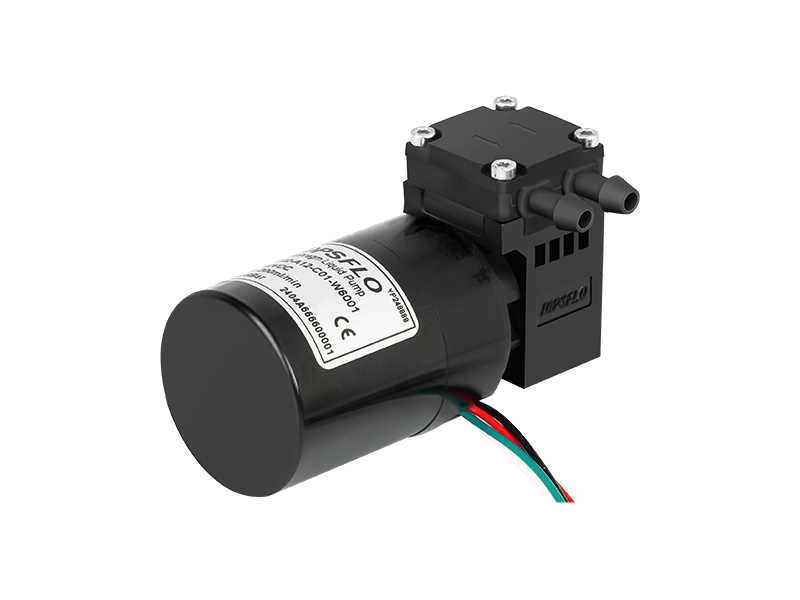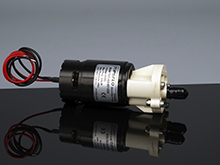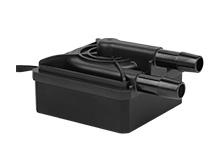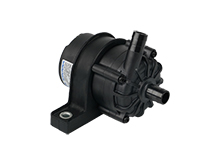Effective Methods to Reduce the Noise of Diaphragm Pumps
2024-06-19
Diaphragm pumps are a relatively common pump that plays an important role in various fields, including chemical, medical, food processing, environmental monitoring and other equipment. However, it is well known that the noise generated by diaphragm pumps during operation has a negative impact on the working environment and the health of operators.
For example, in the medical industry, diaphragm pumps are used to transport medicines, liquid medicines, biological products, etc. Its precise delivery capacity and protective effect on liquids make it an important part of medical equipment. However, the hospital environment usually requires quietness, and the presence of diaphragm pump noise may interfere with the work efficiency of medical staff and even affect the rest and treatment of patients. Therefore, this article will discuss the sources of noise and how to take effective measures to reduce the noise level of diaphragm pumps, thus ensuring production efficiency and the safety and comfort of the working environment.
Like most machinery, diaphragm pumps inevitably generate operational noise during operation. Usually, it is crucial to distinguish between actual loudness in decibels and perceived loudness, which depends on the sound characteristics of each component when it is working, such as sharp sound (harsh and unpleasant), noisy sound (multiple mixtures), vibrating sound, etc.
Diaphragm pumps are usually composed of pump heads, diaphragms, valve plates, motors, bearings and other components. Any component may produce a certain amount of noise during operation.
For example, when the motor is running at high speed or under heavy load, the motor itself will generate running noise and mechanical noise caused by friction with bearings and other components. The opening and closing of the valve under high-frequency operation will also generate vibration and noise. We will discuss feasible measures to reduce noise based on the structure of the pump itself:
1. Optimize the design structure
The design structure of the diaphragm pump directly affects its noise level. By optimizing the design, the noise generation can be reduced.
1) Reduce noise by reducing bearing clearance
In diaphragm pumps, the bearing clearance in the motor and compressor housing is often the main source of noise. Bearing clearance refers to the gap or spacing between the inner and outer rings of the bearing. When the bearing clearance is too large, it will cause unstable vibration and friction of the bearing during operation, thereby generating noise. Using higher quality bearings with tighter tolerances can help reduce the noise of the pump.
2) The design of the diaphragm is crucial
The elasticity and softness of the diaphragm are crucial to the stable operation of the pump. If the diaphragm is too stiff or not elastic enough, it may cause unstable operation of the pump, increase vibration and noise.
The diaphragm needs to maintain good sealing performance during operation to prevent fluid leakage and pressure loss. If the sealing performance of the diaphragm is poor, it may cause the pump to generate additional noise during operation.
Therefore, choosing the right diaphragm material and thickness can minimize vibration transmission and thus reduce noise.
3) Reduce noise by customizing valve material
The valve controls the flow direction and flow rate of the fluid in the diaphragm pump. Its design and working principle directly affect the performance and noise level of the pump. The faster the pump runs, the higher the frequency of the valve hitting the valve seat.
TOPSFLO is committed to optimizing the diaphragm structure, valve plates with excellent sealing performance, and precise bearing structures. TOPSFLO carefully select a series of high-performance materials, such as PP, PPS, PTFE, FKM, FFKM and EPDM. For customizing the core components of the pump, such as diaphragms, valve plates and pump heads. This ensures that the installation and operation of each item meet the design requirements, which can effectively reduce the contribution of the internal structure to the noise.
2. Adjust working parameters
Adjusting the working parameters of the diaphragm pump can effectively reduce noise. For example, reducing the working pressure and flow rate can reduce the vibration and injection sound of the liquid; adjusting the working speed so that it works within the appropriate speed range can also reduce the generation of noise.
3. Use low-noise materials
The housing and pipes of the diaphragm pump are also one of the sources of noise. Therefore, it is very important to choose low-noise materials to make these parts. Common low-noise materials include rubber, silicone, polyethylene, etc. In addition, sound-absorbing materials such as foam and plastics can be added to the inside of the diaphragm pump housing to further reduce the spread of noise.
4. Reasonable installation
Reasonable installation of diaphragm pumps is also an important measure to reduce noise. When installing a diaphragm pump, choose a suitable location, away from work areas and crowded places. Take effective sound insulation measures, such as setting up soundproof covers and sound-absorbing walls, to prevent the spread of noise. Ensure that the foundation and supporting structure of the motor are stable and reliable, and reasonably install shock-absorbing devices to reduce the vibration and noise of the diaphragm pump. By adding a silencer at the inlet or outlet of the pump, the sound will be suppressed when passing through the porous material layer, thereby reducing noise and slightly reducing the pump flow.
In summary, the noise of diaphragm pumps can be effectively reduced by optimizing the design structure, adjusting the working parameters, using low-noise materials and reasonable installation. With the advancement of science and technology and the development of engineering technology, it is believed that the noise problem of diaphragm pumps will be better solved, which will improve the working environment and protect the health of employees.












